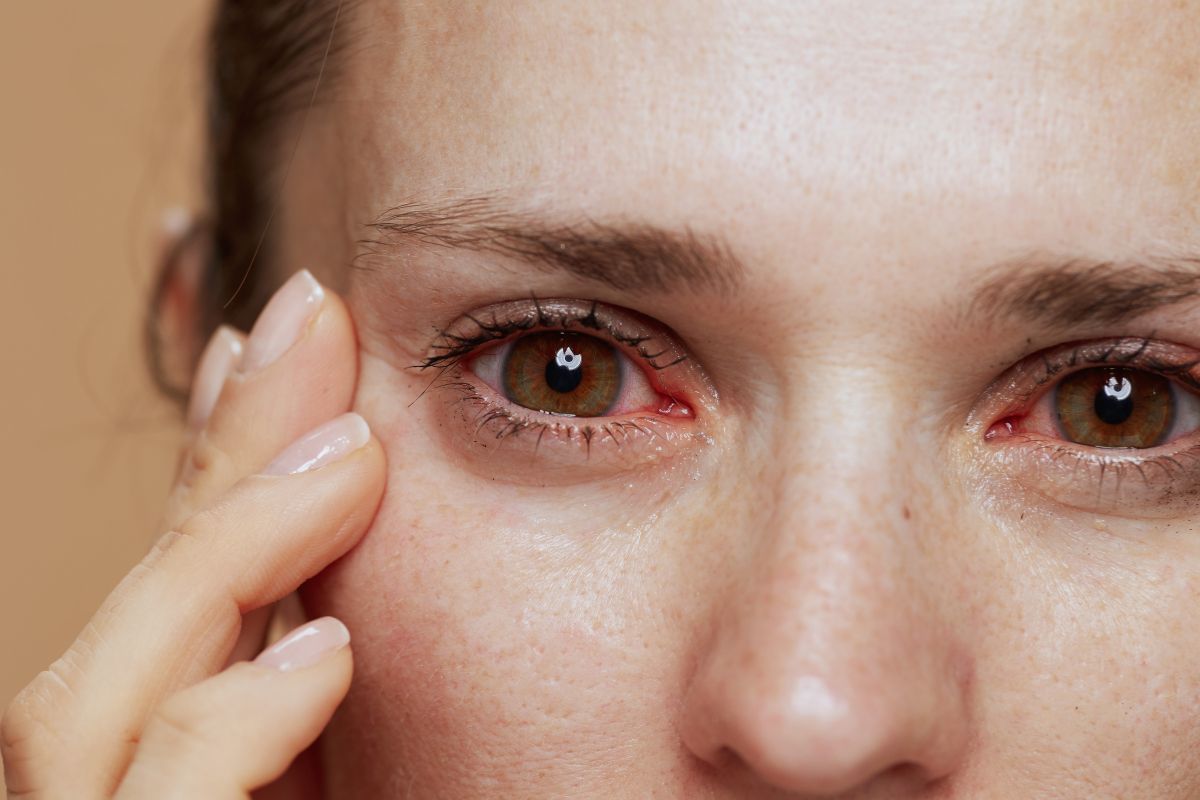Eye Redness vs. Pink Eye: A Comprehensive Guide to Understanding and Treating Red Eyes
Red, irritated eyes are a common complaint, affecting people of all ages and impacting their daily lives. While often used interchangeably in casual conversation, eye redness and pink eye (conjunctivitis) are distinct conditions with different underlying causes, symptom presentations, and treatment approaches. This comprehensive guide will delve into the nuances of each condition, enabling you to better understand your symptoms and make informed decisions about when professional medical attention is necessary. We'll also explore how incorporating soothing eye care products, such as those designed to alleviate discomfort, can complement other treatment strategies.
Understanding the Complex Anatomy of the Eye
Before we differentiate between eye redness and pink eye, it's crucial to understand the eye's intricate structure. The eye is a marvel of biological engineering, comprising several interconnected parts that work in harmony to enable vision. These include the cornea (the transparent outer layer that protects the eye), the iris (the colored part that controls the size of the pupil), the pupil (the opening in the center of the iris that allows light to enter), the lens (which focuses light onto the retina), the retina (the light-sensitive tissue at the back of the eye that converts light into electrical signals), and the conjunctiva (the thin, transparent membrane that lines the inside of the eyelids and covers the white part of the eye). Many conditions causing eye redness involve inflammation, irritation, or infection of one or more of these structures.
Eye Redness: A Symptom with Multiple Potential Causes
Eye redness, characterized by bloodshot or visibly red eyes, is a symptom, not a disease in itself. It signals that the blood vessels in the eye's surface are dilated or inflamed. This can result from a wide array of factors, making accurate diagnosis crucial. Let's explore some of the most common contributors to eye redness:
- Dry Eye Syndrome: A common condition characterized by insufficient tear production or poor tear quality, leading to irritation, redness, burning, and a gritty sensation. Environmental factors like air conditioning, wind, or prolonged screen time exacerbate dry eye symptoms.
- Allergic Conjunctivitis: Exposure to allergens such as pollen, pet dander, dust mites, or certain foods can trigger an allergic reaction, causing itchy, watery, red eyes, often accompanied by sneezing, runny nose, and nasal congestion.
- Eye Strain and Digital Eye Strain: Prolonged near-work activities like reading, computer use, or driving, especially in poor lighting or with incorrect posture, lead to eye strain, inducing fatigue, headaches, and redness. The prevalence of digital eye strain has increased significantly in recent years due to extensive screen time.
- Lack of Sleep and Eye Health: Insufficient sleep disrupts the body's natural restorative processes, including those crucial for maintaining healthy eyes. This can lead to dilated blood vessels, visible redness, and increased susceptibility to eye problems.
- Lifestyle Factors and Eye Redness: Excessive consumption of alcohol and caffeine, along with smoking, dehydration, and poor nutrition, can negatively affect tear production, potentially leading to dry, red eyes. Maintaining a healthy lifestyle is essential for optimal eye health.
- Environmental Irritants and Eye Health: Exposure to smoke, dust, pollutants, or other irritants in the air can irritate the eyes, causing redness, burning, watering, and discomfort. This is especially relevant for individuals living in urban areas with high levels of air pollution.
- Medications and Eye Side Effects: Certain medications, such as some antihistamines and decongestants, have side effects that can include dry eyes and redness as an unintended consequence.
- Contact Lens Irritation and Eye Health: Improperly fitted or unclean contact lenses can irritate the eye's surface, leading to redness, discomfort, and even more serious infections. Adhering to proper hygiene practices for contact lens wear is crucial.
- Blepharitis: Inflammation of the eyelids, often caused by bacterial infection or skin conditions like seborrheic dermatitis or rosacea, can lead to redness, crusting, and irritation of the eyes.
Pink Eye (Conjunctivitis): Inflammation of the Conjunctiva
Pink eye, also known as conjunctivitis, is an inflammation of the conjunctiva, the delicate membrane covering the sclera (the white part of the eye) and lining the inner surface of the eyelids. This inflammation often manifests as redness, itchiness, and discharge. Three main types of conjunctivitis exist:
- Viral Conjunctivitis: This highly contagious form is typically caused by adenoviruses and often accompanies other cold-like symptoms. It usually resolves on its own within a week or two.
- Bacterial Conjunctivitis: Bacterial infections cause this type, often characterized by thicker, pus-like discharge. Antibiotic treatment is usually necessary to clear the infection.
- Allergic Conjunctivitis: Allergens trigger this type, frequently alongside other allergic symptoms like sneezing, runny nose, and itching. Antihistamines and other allergy medications help alleviate symptoms.
Pink eye, particularly the viral and bacterial forms, is highly contagious. Practicing good hygiene, including frequent handwashing, avoiding touching your eyes, and not sharing personal items like towels or eye makeup, is essential to prevent its spread.
Key Differences: Eye Redness vs. Pink Eye
While both conditions may present with red eyes, there are key differences to consider for accurate diagnosis and appropriate management:
| Feature | Eye Redness | Pink Eye |
|---|---|---|
| Redness Severity | Can range from mild to moderate | Usually more intense and noticeable |
| Discharge | Minimal or absent | Watery, mucousy, or pus-like |
| Itching | May or may not be present | Often present, especially in allergic conjunctivitis |
| Pain | Mild or absent | Can range from mild to severe |
| Light Sensitivity (Photophobia) | Usually absent | Often present |
| Contagiousness | Not contagious | Highly contagious (viral and bacterial forms) |
| Duration | Varies depending on the cause | Usually resolves within a few days to a couple of weeks |
Soothing Eye Care: Integrating Natural Solutions
For eye redness caused by fatigue, dryness, or strain, consider incorporating natural soothing methods into your daily routine. The Wise Quest Soothing Eye Patches offer a gentle, natural approach to alleviate eye discomfort. These patches harness the power of traditional Chinese herbal medicine to reduce eye fatigue, dryness, astringency, and redness, particularly those associated with prolonged screen time. They promote healthy blood circulation around the delicate eye area, helping to minimize inflammation and provide a comforting, cooling sensation.

Remember, while these patches can provide soothing relief for certain types of eye redness, they're not a substitute for professional medical advice or treatment, particularly for infections or allergies. They are best used to address symptoms stemming from eye strain, fatigue, and dryness.
When Professional Medical Help is Necessary
While many instances of eye redness resolve on their own or with simple home remedies, consulting an eye care professional is crucial under certain circumstances:
- Severe eye pain that interferes with daily activities
- Significant vision changes, such as blurry vision, double vision, or halos around lights
- Profuse or pus-like discharge from the eye
- Redness accompanied by fever or other flu-like symptoms
- Redness persisting for more than a few days despite home treatment
- Suspected pink eye or other eye infection
- Any sudden or unexplained changes in your eye health
An ophthalmologist or optometrist can perform a thorough eye examination to pinpoint the cause of eye redness and recommend appropriate treatment. Early intervention can prevent potential complications and preserve your vision.
Comprehensive Eye Health: A Holistic Approach
Maintaining optimal eye health involves a holistic approach encompassing lifestyle choices, preventative measures, and prompt medical attention when needed. Prioritize sufficient sleep, maintain a balanced diet rich in essential nutrients, practice good hygiene, and protect your eyes from environmental irritants. Regular eye exams are essential for early detection and management of potential issues. While soothing products like Wise Quest Soothing Eye Patches can offer comforting relief for some eye discomfort, they should be considered a complement to a broader strategy focused on comprehensive eye health.
Conclusion
Eye redness and pink eye, although both causing red eyes, are distinct conditions requiring different management strategies. Understanding the causes and symptoms of each is vital for making informed decisions about treatment. While soothing eye patches such as the Wise Quest Soothing Eye Patches can provide relief for some types of eye redness, prompt medical attention is crucial for persistent, severe, or concerning symptoms. Prioritize regular eye exams and a proactive approach to comprehensive eye care to maintain your vision and overall well-being.











